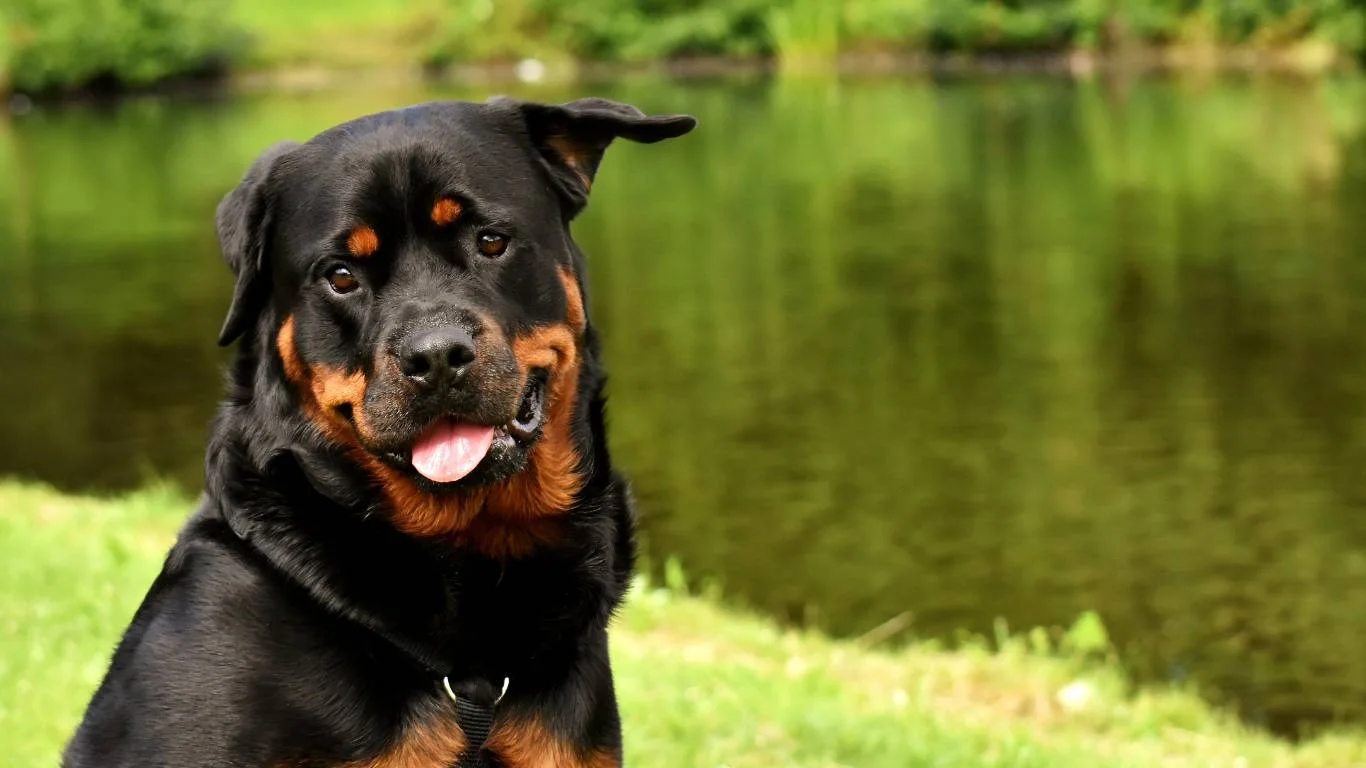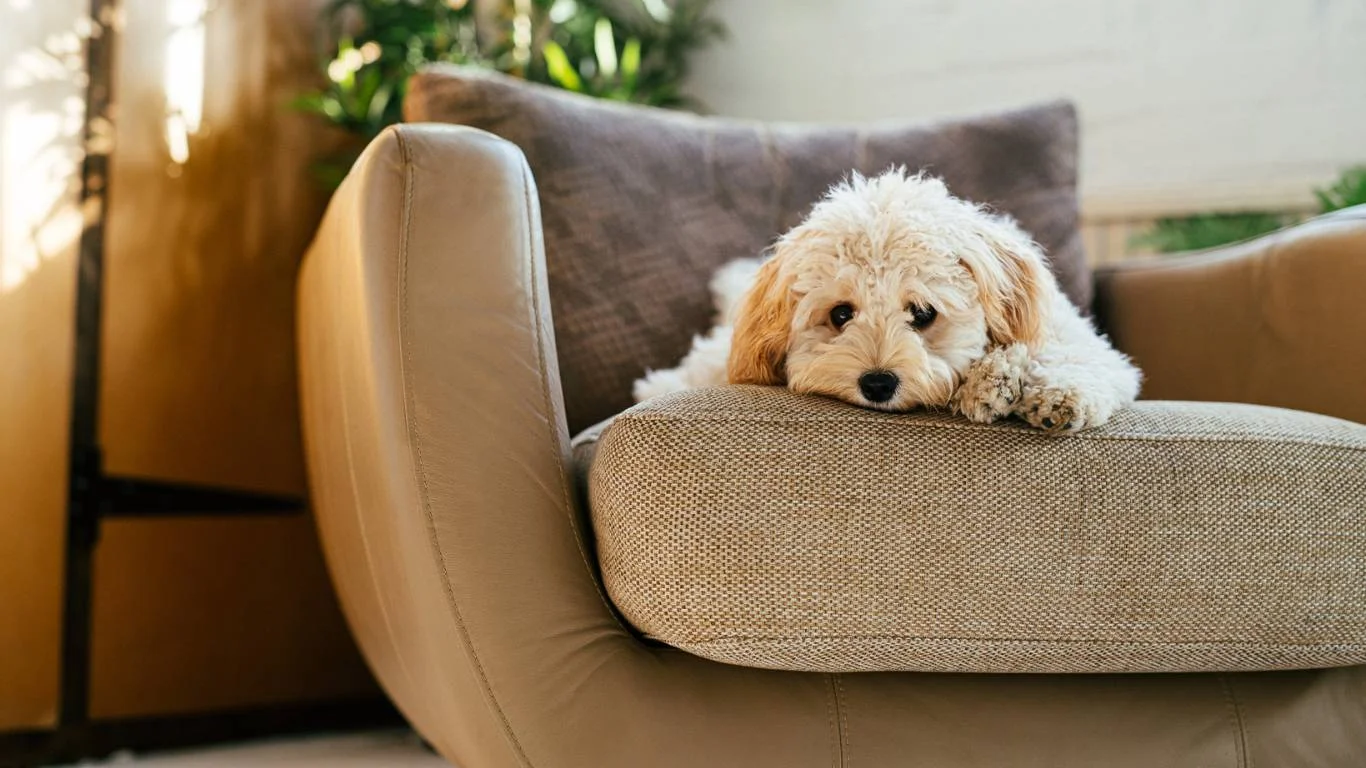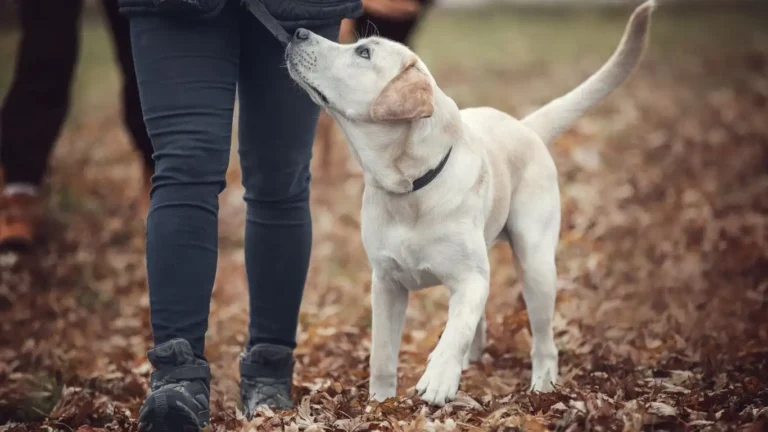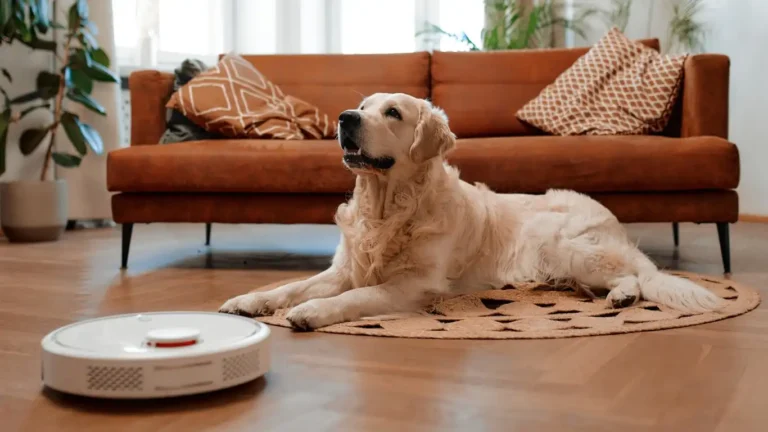How to Reduce Stress in Aging Dogs Naturally: Top Tips for Calm & Happiness
As a veterinary assistant with a strong focus on pet nutrition, I’ve had the privilege of helping many dogs in their golden years. The aging process can be tough on our furry friends, and one of the most significant challenges is managing their stress levels. If you’re asking yourself, “How to reduce stress in aging dogs?” you’re definitely not alone. It’s something I see a lot, especially as dogs start to slow down and face new health issues. In this post, we’ll explore practical and gentle methods to keep your aging dog relaxed and happy during this stage of their life. Trust me, there’s a lot you can do to help your dog feel at ease!
Understanding the Impact of Aging on Dogs

First off, let’s talk about why older dogs can experience higher levels of stress. Just like us, aging dogs face physical, mental, and emotional changes that can affect their well-being. While each dog ages differently, there are a few common factors that can increase stress as your dog gets older:
- Physical Health Changes: Arthritis, vision or hearing loss, and other health issues can make your dog feel disoriented or uncomfortable.
- Cognitive Dysfunction Syndrome (CDS): This is a condition similar to dementia in humans, and it affects many older dogs. CDS can lead to confusion, disorientation, and anxiety.
- Changes in Routine: Dogs thrive on routine, and as they age, changes in their daily schedule (like moving to a new home or new family members) can trigger stress.
- Reduced Mobility: As dogs get older, they might be less able to explore, play, or even go for walks. This can create frustration and stress.
Being aware of these changes is key to knowing how to reduce stress in aging dogs. The first step in helping your dog is recognizing when these stressors are present so that you can take steps to address them.
How to Recognize Stress in Aging Dogs
Common Signs of Stress

Recognizing stress in your aging dog can sometimes be tricky. Dogs can’t verbally communicate how they’re feeling, so it’s important to watch for changes in their behavior. Here are some signs that your senior dog might be stressed:
- Excessive panting or drooling: While panting is normal after exercise or excitement, it can also indicate stress, especially if it happens when your dog is resting.
- Aggression or irritability: Some dogs may become snappy or growl when stressed, even if they’ve never displayed this behavior before.
- Changes in appetite: Stress can cause some dogs to eat less, while others may overeat or beg for food constantly.
- Restlessness or pacing: If your dog seems unable to settle or walks aimlessly around the house, this could be a sign of anxiety or discomfort.
- Withdrawal or hiding: Senior dogs may seek solitude when they’re stressed or uncomfortable, avoiding interaction with family members or other pets.
If you notice any of these signs in your aging dog, it’s essential to address them promptly. Chronic stress can lead to further health issues and affect your dog’s quality of life. So, what can you do to help ease their stress?
Practical Ways to Reduce Stress in Aging Dogs
1. Maintain a Consistent Routine

As I’ve mentioned before, dogs, especially older ones, thrive on consistency. Keeping a regular routine helps your dog feel secure and reduces the stress of uncertainty. Here’s how you can establish a routine:
- Regular Feeding Times: Try to feed your dog at the same time each day to create stability in their day. This also helps with digestion and overall health.
- Consistent Bathroom Breaks: Make sure your dog has regular opportunities to go outside, especially if they have incontinence or other age-related issues.
- Daily Walks: Even though your dog might not be as spry as they used to be, regular, gentle walks can help reduce anxiety and keep their muscles strong.
One thing I’ve seen work wonders is keeping the timing of meals, walks, and even playtime consistent. This helps your dog anticipate what’s coming next and feel more in control, reducing the chances of stress.
2. Provide a Comfortable and Calm Environment
Creating a calm space for your dog is one of the simplest yet most effective ways to reduce stress. As dogs age, their senses (hearing, sight, and smell) might diminish, making the world feel more overwhelming for them. Here are a few tips for creating a stress-free environment:
- Quiet Areas: Set up a quiet space where your dog can retreat when they feel overwhelmed. A soft bed in a calm corner of the house can make a world of difference.
- Comfortable Bedding: Invest in supportive bedding, especially if your dog has arthritis or other joint issues. A comfortable bed can help ease physical discomfort and improve sleep.
- Gentle Music: Many dogs respond well to soft, classical music or white noise, which can drown out household sounds and help your dog feel relaxed.
One of my clients set up a cozy space for her senior dog with dim lighting, a soft bed, and a calming diffuser. It was so sweet to see how much the dog loved it—he had a place to retreat when things got too noisy or busy.
Reducing stress in aging dogs isn’t just about one magic solution—it’s about creating a balance between physical comfort, mental relaxation, and emotional reassurance. In the next section, we’ll talk more about other ways to keep your senior dog relaxed and happy as they age.
3. Introduce Calming Supplements and Natural Remedies

If your aging dog’s stress levels are becoming overwhelming, natural remedies and calming supplements can be incredibly helpful. Over the years, I’ve seen how well these can work when combined with the right environmental changes. But of course, it’s important to consult with your vet first before introducing any new supplements or herbs into your dog’s routine. Here are some common options that could help:
- CBD Oil: CBD has become a popular remedy for anxiety in both humans and pets. It’s known to have calming effects and can help with pain relief, making it great for senior dogs suffering from arthritis or other chronic conditions.
- Melatonin: If your dog has trouble sleeping or gets restless at night, melatonin might help. It can aid in regulating their sleep cycle and help reduce anxiety.
- Herbal Remedies: There are a variety of herbs like valerian root, chamomile, and lavender that can help calm your dog’s nerves. I’ve found that these are particularly useful for dogs experiencing separation anxiety or discomfort when they’re left alone.
- Probiotics: A healthy gut can play a big role in reducing stress. If your dog’s digestive health is out of whack, it can cause them to feel more anxious or uncomfortable. Probiotics can help maintain a balanced gut microbiome, supporting overall health and reducing stress.
While I’ve seen positive results with these remedies in some of my patients, remember that every dog is different. What works for one dog might not be effective for another, so keep track of your dog’s responses to these changes and adjust accordingly.
4. Provide Mental Stimulation

One of the things I always stress to pet owners of aging dogs is the importance of keeping their minds active. As dogs get older, they can experience cognitive decline, which often leads to confusion, anxiety, and stress. But the good news is that mental stimulation can slow down this process and help keep your dog sharp and calm.
How to Keep Their Mind Engaged
- Interactive Toys: Puzzle toys, treat-dispensing toys, and even interactive games that require problem-solving can engage your dog’s brain and keep them entertained for hours. I’ve seen firsthand how much some dogs love these toys, especially when they start getting more advanced in age.
- Training Sessions: It doesn’t matter how old your dog is—short training sessions can help maintain mental clarity. Reinforcing basic commands like sit, stay, and come can give your dog a sense of purpose and achievement.
- Hide-and-Seek Games: If you have the time, playing hide-and-seek with your dog can be a fun and mentally stimulating activity. Hiding treats around the house and encouraging them to find them is not only fun but also engages their sense of smell and brainpower.
- Change of Scenery: Even taking short trips to new places (like the park or around the block) can provide mental stimulation for your aging dog. New smells, sights, and sounds can excite their senses and help reduce stress.
Incorporating a little bit of mental exercise into your dog’s day, even if it’s just for 10-15 minutes, can make a huge difference. I’ve seen some dogs blossom with just a few simple activities. Plus, it’s a nice bonding experience for both of you!
5. Consider Massage and Acupressure

Another highly effective way to reduce stress in aging dogs is through touch. Just like us, dogs can experience relief from physical and emotional stress through massage and acupressure. I’ve personally seen a lot of older dogs respond positively to this, especially those with joint pain, muscle stiffness, or anxiety issues. Here’s how you can introduce these therapies to your dog:
Massage Therapy for Dogs
Gentle, slow massages can do wonders for a stressed-out senior dog. They help increase blood flow, relieve muscle tension, and promote relaxation. You don’t need to be a professional massage therapist to do this at home; just keep the pressure light and steady. Focus on the neck, shoulders, and back, as these areas tend to hold a lot of tension.
Acupressure for Stress Relief
Acupressure, which involves applying gentle pressure to certain points on the body, is another great option. It can help alleviate stress, ease pain, and promote overall health. I know some pet owners who have learned basic acupressure techniques and use them to calm their dogs during stressful situations, like during vet visits or thunderstorms.
How to Get Started
If you’re not sure where to start, there are plenty of resources online and at your local pet store that can teach you how to perform simple dog massage and acupressure techniques. Some professional pet therapists even offer virtual or in-person sessions. It’s definitely worth considering if your dog is particularly stressed or uncomfortable in their older years.
By offering physical comfort through massage or acupressure, you can help ease your dog’s stress and promote a sense of calm, especially when combined with a low-stress environment. Just remember to be gentle and patient as your dog may not be used to these types of touch.
6. Monitor Their Diet and Nutrition
It’s no surprise that diet plays a huge role in how your dog feels both physically and emotionally. As dogs age, their nutritional needs change, and their metabolism slows down. This can affect their energy levels, weight, and overall health, which in turn can increase stress levels. Making sure your dog is getting the right nutrients is another way to help reduce stress.
Foods to Help Reduce Stress
- Omega-3 Fatty Acids: These are great for supporting brain health and reducing inflammation. You can find omega-3s in fish oils or certain dog foods formulated with these healthy fats.
- High-Quality Protein: Older dogs need protein to maintain muscle mass and energy. Make sure your dog’s diet is rich in high-quality protein sources like chicken, turkey, or fish.
- Antioxidants: Ingredients like blueberries, spinach, and kale are packed with antioxidants, which help combat the effects of aging and reduce oxidative stress.
- Joint Supplements: If your dog suffers from arthritis or joint pain, adding supplements like glucosamine and chondroitin can help reduce inflammation and improve mobility, making them less stressed from physical discomfort.
Switching your dog to a senior-formulated food that supports their aging body can make a significant difference in their overall well-being. I’ve seen how a simple dietary change can help reduce stress, especially when combined with the other tips we’ve discussed.
Taking care of an aging dog requires a bit more attention and patience, but with the right approach, you can significantly improve their quality of life. Keep your dog’s physical and emotional needs in check, and you’ll both enjoy more years of happy companionship.
7. Provide Comfort During Stressful Situations

One of the most common sources of stress for aging dogs is sudden or unexpected situations. Whether it’s a change in the weather, a new person entering the home, or even a vet visit, these events can be particularly overwhelming for older dogs. Over the years, I’ve worked with many pet owners to help their dogs cope with these stressful moments, and it’s amazing how some small adjustments can make a big difference. Here are a few strategies to help your senior dog feel more at ease when life throws a curveball:
Managing Noise Sensitivity
As dogs age, they often become more sensitive to sounds. Thunderstorms, fireworks, or even loud household appliances can send your dog into a state of panic. Some dogs are prone to what we call “noise phobia,” and this can be particularly stressful for older dogs who might not have the same ability to handle sudden noises like they once did. Here’s what you can do:
- Safe Spaces: Create a safe, quiet space where your dog can retreat when they’re feeling overwhelmed. A crate with a blanket over it, or a cozy corner away from windows, can provide a sense of security.
- Sound Therapy: Try playing calming music or white noise to drown out outside sounds. I’ve had many clients swear by calming music specifically designed for dogs. It’s something to try if you notice your dog gets anxious with loud noises.
- ThunderShirt or Anxiety Wrap: Some dogs find comfort in the gentle pressure provided by products like ThunderShirts. These wraps can help calm your dog by providing a feeling of security during stressful times.
These methods can significantly reduce stress when your dog’s environment becomes noisy or chaotic. As someone who’s worked closely with senior dogs, I can tell you firsthand how much of a difference these little adjustments can make in keeping a dog relaxed and safe during stressful moments.
8. Keep Your Senior Dog Active – But Don’t Overdo It

Physical activity is essential for senior dogs, but it’s important to strike the right balance. Too much exercise can lead to exhaustion and strain on their joints, while too little can lead to weight gain, muscle atrophy, and increased anxiety. Over the years, I’ve seen how a steady routine of gentle exercise can not only keep senior dogs fit but also help reduce stress.
Types of Exercise for Older Dogs
- Short, Frequent Walks: Instead of one long walk, try taking your dog on multiple short walks throughout the day. This helps keep their joints and muscles limber without overexerting them.
- Swimming: If your dog enjoys water, swimming is a great low-impact exercise that’s easy on their joints. It’s also a wonderful way to tire them out without putting extra strain on their body.
- Gentle Play: If your dog enjoys fetch or other games, try shortening the playtime to accommodate their age. You can also switch to games that don’t require as much running, like tug-of-war, which still keeps them engaged and active.
Just like with humans, the key is moderation. As your dog ages, their stamina decreases, and it’s important to adapt their exercise routine to fit their physical limitations. Even a few minutes of light activity each day can do wonders for reducing stress and keeping their body and mind sharp.
9. Regular Vet Visits and Monitoring Health
One of the most important things you can do to manage stress in an aging dog is to stay on top of their health. Regular vet check-ups can help catch any underlying conditions that might be contributing to stress, such as arthritis, vision impairment, or cognitive dysfunction. I’ve always recommended that pet owners with senior dogs keep a close eye on any changes in their dog’s behavior or health and report them to the vet immediately.
Health Concerns that Contribute to Stress
- Chronic Pain: Dogs with arthritis or other painful conditions may become irritable or stressed because of their discomfort. Pain management is crucial for a calm, happy senior dog.
- Cognitive Decline: Dogs suffering from cognitive dysfunction may experience confusion, anxiety, and even aggression. A vet may suggest medications or supplements to help manage these symptoms.
- Hearing and Vision Loss: If your dog is losing their sight or hearing, they might become startled easily or seem disoriented, contributing to stress. This can sometimes be alleviated with special training or modifications to your home environment.
Regular vet visits can ensure that any health issues are being addressed, which in turn can help your dog stay relaxed and stress-free. With early intervention and appropriate treatment, many of these conditions can be managed effectively, leading to a better quality of life for your senior dog.
10. Socialization and Positive Interactions
Despite aging, senior dogs still benefit from positive socialization and interaction with people and other pets. While it’s important not to overwhelm them, keeping their social life active can help reduce feelings of isolation and anxiety. I’ve seen older dogs flourish when given the opportunity to interact with familiar faces, and even new furry friends, in a calm and controlled way.
How to Encourage Positive Socialization
- Slow Introductions: If you’re introducing a new dog to your household, do so gradually. Older dogs can become stressed with sudden changes, so allow them time to adjust to a new companion.
- Quality Time with Family: Sometimes, simply spending more quality time with your dog can make them feel more secure. Take the time to sit with them, pet them, and engage in calm activities like reading or watching TV together.
- Dog-Friendly Outings: If your dog enjoys being around other dogs, consider taking them to dog-friendly parks or events. Just make sure the environment is calm and not too overwhelming for your senior dog.
Socialization doesn’t mean your dog needs to be around people or other dogs constantly; it’s all about providing opportunities for positive, stress-free interactions. When done right, it can help your dog feel more secure, happy, and less anxious in their senior years.
References
Disclaimer: The content in this article is for informational purposes only and should not replace professional veterinary advice. Always consult your veterinarian before making any changes to your dog’s diet, exercise routine, or treatment plan. Every dog is unique, and a personalized approach to care is essential for their health and well-being.






